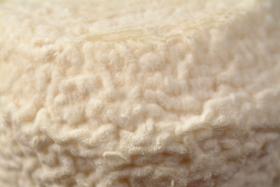Ressources dossier
Food, Global HealthThe 4 benefits of fermented foods
Published on 14 February 2023
When a food is fermented, its properties are altered, affecting the physicochemical structure of the food matrix. The microorganisms present in the fermented food produce molecules, called metabolites, which can in some cases have health benefits, such as the production of vitamin C in sauerkraut. They can also act by enriching the diversity of microorganisms within the microbiota of the eater, an essential element of human health. The following is an overview of the benefits of fermented foods.
1 - COMPOSITION - More vitamins and fatty acids
Fermented foods contain, by definition, a multitude of microorganisms, several million or even billions. This ecosystem produces molecules either directly or in interaction with the components of the food (proteins, lipids, etc.). Thus, the composition of the fermented food is very different from the basic food. And for some foods, its new composition is nutritionally interesting, as is the case for dairy products in which propionic bacteria allow the synthesis of vitamin B12. In sauerkraut, the vitamin C content is higher than in cabbage. Also, during fermentation, certain microorganisms produce short-chain fatty acids, which are a source of energy, but which are also precursors of aromatic compounds.
2 - Conservation - Natural conservation capacities
Some microorganisms produce compounds called bacteriocins that inhibit the growth of pathogenic bacteria.
The very principle of fermentation is as follows: when microorganisms break down the sugars in food, they release an acid (lactic, acetic, etc.), or alcohol in the case of alcoholic fermentation, which inhibits the growth of other pathogenic microorganisms that may develop in food. In addition, some microorganisms produce compounds called bacteriocins that inhibit the growth of pathogenic bacteria. They can also delay the development of microorganisms that spoil food and thus allow it to be preserved for longer. This is called bioprotection or biopreservation. “But we don’t always know how it works! This is the case for a strain of Afnia alvei that inhibits Echerichia coli, but we still haven’t managed to determine its mechanism of action”, explains Cécile Callon, a research engineer at the joint research unit on Cheese in Aurillac. Selected bacteria can also be added to certain foods to improve their preservation, without transforming them into another product. Or, during wine-making, we can select strains that produce less sulphite. All of this has the same objective: to do without synthetic additives or to limit the production of undesirable molecules.
The big cheese
At INRAE, scientists have been using this principle of biopreservation for a very long time for raw milk cheese where the risk of contamination by pathogenic microorganisms is high.

The story begins in the 2000s when scientists from the joint research unit on Cheese in Aurillac, France, demonstrated the action of the bacterium Lactococcus garvieae in preventing the development of the pathogenic bacterium Staphylococcus aureus in uncooked pressed cheeses such as Saint-Nectaire. The unit then looked at the development of Listeria monocytogenes in raw milk cheeses and identified strains or consortia that inhibit this pathogen. “We are working on consortia, i.e. the association of one, two or three strains that act in synergy, and this leads to even stronger inhibition.” But to use bacteria in biopreservation, there is a golden rule: “The microorganism used must be healthy and have no impact on the health of the consumer, and for this we look to see if it has any resistance or virulence genes to ensure that it can be used as a ferment”, says Cécile Callon. Today, the challenge is to have a holistic approach and to consider the entire food chain, from milk to the consumption of cheese by the consumer: “We are looking for bioprotectors that can amplify the inhibition phenomenon. We could even envisage inoculating certain strains into the animals so that they end up in the milk.” Finally, the work of the joint research unit on Cheese also involves studying the impact of inoculating ferments into milk on the microbial communities of the foodstuff to ensure that these ferments have no sensory impact or other.
3 - TOXICITY - Fewer undesirable compounds
The activity of the microorganisms in fermented foods can, in some cases, reduce their toxicity. One example is cyanogenic compounds, which are the source of cyanide. Present in cassava but degraded through a fermentation process, they are simply rendered harmless and edible. This is also true for the modification of certain compounds that were originally allergenic and become “inactive”.
4 - HEALTH - Microorganisms for our microbiota
Eating fermented foods contributes to a richer digestive microbiota.
The human body lives in symbiosis with a multitude of microorganisms. Our skin, mouths, and guts literally crawl with invisible life! These microorganisms in the gut are known collectively as the microbiota. For several years now, scientists have shown that the interactions humans have with their gut microbiota have strong links with health, and that the number and diversity of the microorganisms are determining factors. One way to maintain the richness of intestinal microbiota, in addition to a diversified diet, is to ingest live microorganisms, i.e. bacteria or yeast, which is just what fermented foods offer. To further understand the links between the consumption of fermented foods, the microbiota and health, a new participatory research project, “Le French Gut”, was launched in September 2022. This project aims to analyse the French microbiota according to eating habits by collecting 100,000 stool samples from adults living in France, combined with a health and nutrition questionnaire.

Our body is home to ecosystems containing billions of microorganisms, known as microbiota. Initially studied in the rumen of cattle, the gut microbiota has emerged over the last 40 years as a key determinant of human health, causing a small revolution in our approach to medicine. Journey to the heart of our research to discover our new health ally.
The taste of wine
Woody notes, red fruit notes, exotic fruit aromas… These descriptions of wines are not there ONLY to show off in company! These aromas are real, exist in the thousands, and we have yeast to thank for them. But how can this great diversity of aromas be explained? The diversity of the grape of course... but it doesn't end there.

“The production of aromas depends on the strain of yeast involved. Different strains produce different aromas with very different profiles”, explains Carole Camarasa, research director at the Sciences for Oenology (SPO) unit. Could there be a recipe for choosing the grape and the yeast to obtain the desired aromas? If only it were that simple. Fully 90% of wines are obtained by fermentation with the yeast Saccharomyces cerevisiae, but in the harvested grapes there are other microorganisms that intervene at the beginning of the process and whose growth is inhibited by the alcohol formed. Only Saccharomyces cerevisiae survives in the presence of ethanol and can thus complete the fermentation process. “This is why in the wine industry, the addition of this yeast is almost systematic to ensure complete fermentation, but its systematic use hinders the development of other yeasts that can contribute to the aromatic profile of wines”, explains Carole. The challenge for research is to test the introduction of other yeast species at the beginning of the process and to encourage their development. Torulaspora delbrueckii and Starmaerella bacillaris are good candidates. If exotic fruit or passion fruit aromas are desired, Metschnikowia pulcherrima yeast is the way to go, with its beta lyase enzymes that release the thiols responsible for these highly sought-after aromas in winemaking.
Another possibility is to look at the genetic profiles and make the link between genes and the production of a particular aroma. “By getting the right mix, we can succeed in obtaining the right genes in the yeast according to the desired aromatic profile.” In recent years, the SPO unit has identified several alleles (variants of a gene) that influence the production of metabolites, in particular esters, which contribute to the aroma of wines. The production of negative aromas can also be limited. The SPO unit has been working on the hydrogen sulphide responsible for the rotten egg smell. The scientists identified two genes responsible for this molecule. These results are used by yeast producers to select strains that lack these genes. But genetics is not everything; several parameters come into play in the formation of flavours. “We have identified three key factors: the amount of available nitrogen, oxygenation and the amount of lipids, fatty acids being precursors of aromatic compounds. Temperature also influences the process as well as the nutrition of the yeast during fermentation.” This will lead to many more years of research for the greater pleasure of our taste buds... and our noses!
RESEARCH - Cohorts under surveillance

To assess the health impact of fermented foods, scientists rely on cohorts of volunteers. For example, the NutriNet Santé study, carried out by the Nutritional Epidemiology Research team (Eren), is monitoring more than 100,000 adults on their eating habits, lifestyle and health over several years. Recently, NutriNet Santé scientists showed that the consumption of at least 160 g of fermented dairy products (yoghurts, cheeses) per day was associated with a reduced risk of cerebrovascular disease compared to the consumption of less than 57 g per day. This association was not demonstrated for non-fermented dairy products.
-
Elodie Regnier
(Send email)
Author / Translated by Inge Laino
